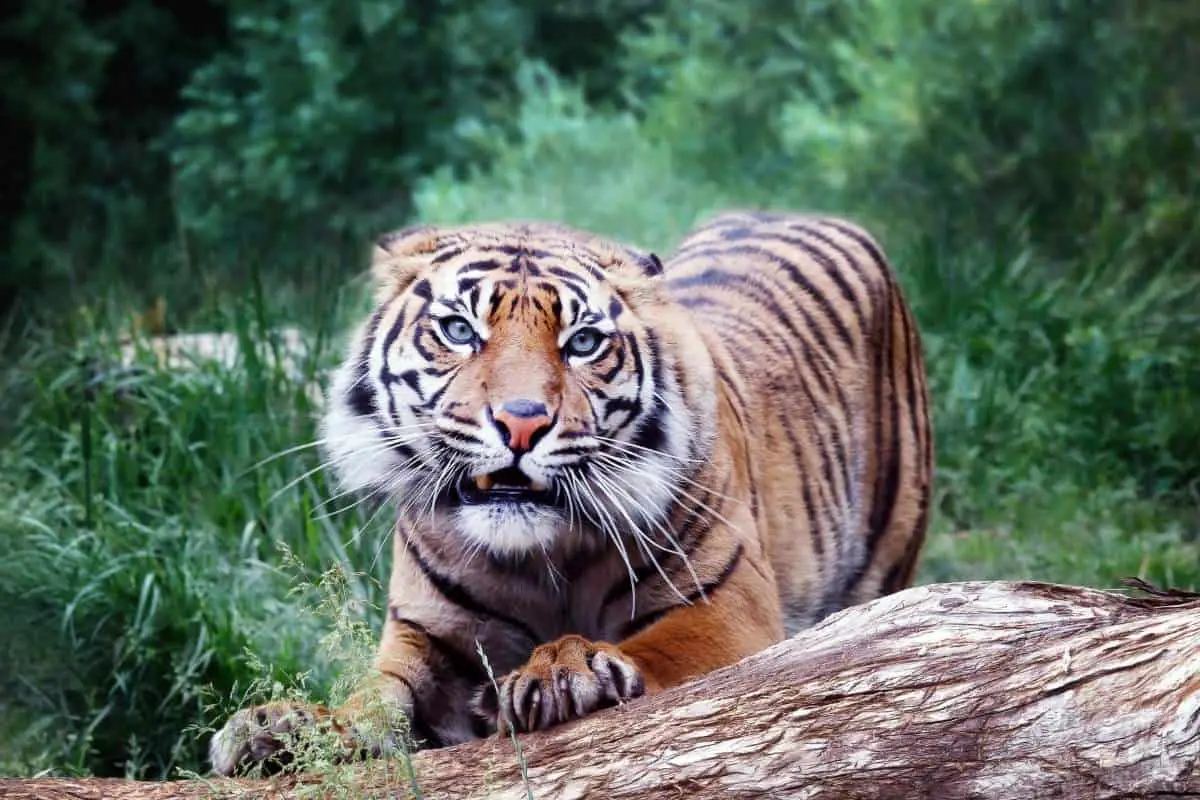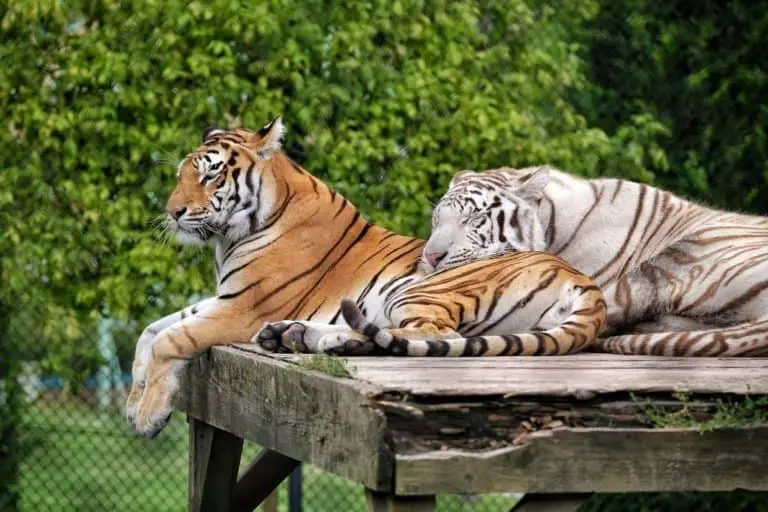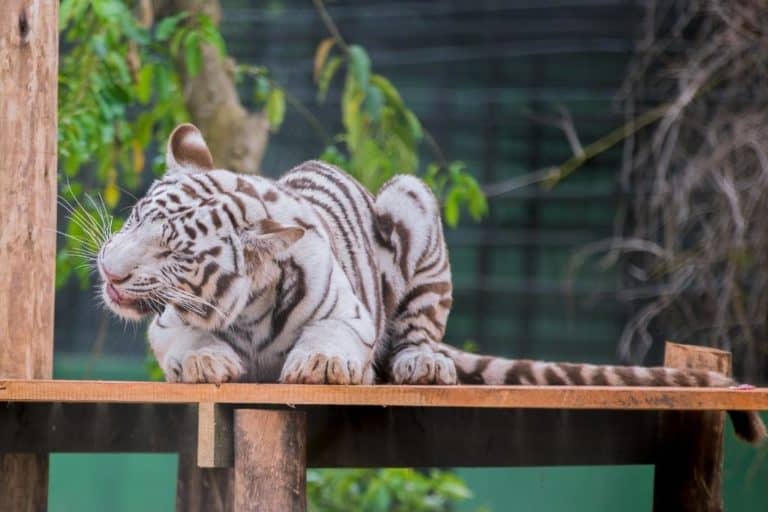Why do tigers have stripes? Get The Facts!
The stripes on tigers are one of the most recognizable features of these animals. But why do they have them in the first place?
There are a few different theories out there, but no definitive answer.
Some people believe that the stripes help tigers camouflage themselves in the jungle, while others think that they warn other animals.
Still, others believe that the stripes help tigers regulate their body temperature.
No matter the reason, it’s clear that these animals wouldn’t be quite as recognizable without their iconic lines!
Stripes are unique to tigers.

No other big cat has stripes as a tiger does!
This is primarily genetic; the striping on their fur actually comes from the tabby family of cats.
If you’ve ever seen a house cat with stripes, you’ll know that they come in several colors and patterns. Your average tabby will often have dark lines on a lighter background.
The color of the tiger’s fur is so essential with how it interacts with light, which is related to how tigers hunt.
As you may already know, big cats are really good at hiding by crouching behind vegetation or even curling up into a ball and covering their eyes to make it look like they’re invisible.
The stripes on a tiger’s fur work with the rest of its body to make this hiding even more effective.
The striping on a tiger actually works just like camouflage does for many animals! When you watch TV and see those nature documentaries, you’ve probably noticed how effective masks can be.
The striping on a tiger’s fur is different depending on where the tiger is located.
For example, if it’s in tall grass, the stripes will be vertical; if it’s hiding behind brush or leaves, the lines will go horizontal. As you can imagine, this makes it really difficult for predators (or prey) to spot them!
It’s thought that tigers might have stripes on their fur to help regulate their body temperature.
The tiger is a pretty big animal with colossal distribution, and it needs to be able to survive in a variety of climates.
It has been observed that the thinner the stripes are, the more relaxed they will be since there is less fur blocking their skin from the sun’s rays.
The thicker stripes are on the parts of a tiger that may be furrier, which makes them warmer!
Not only does this help them regulate their own temperature, but if tigers are surrounded by other tigers whose striping isn’t as thin or thick, it will also help keep them cool or warm.
White tigers have different striping than orange ones.

Everyone knows that white tigers are not wholly white; instead, they have stripes!
And while most tigers have orange-colored fur, their lines can be black; both of these colors are caused by a genetic mutation in the tiger’s genes.
A tiger’s markings also help it recognize other tigers when babies.
They’re only born with darker areas on their fur, but as they grow up, these markings will be broken up by the stripes that make them identifiable to other tigers.
When a baby tiger is learning to hunt, its mother will stay nearby and eventually move off, but she’ll still watch over her young through the bushes until she’s sure that it can hunt correctly.
This makes it especially important for the baby to recognize its mother through her stripes!
These are just a few of the theories that scientists have come up with over the years about why tigers have stripes, but no one has come up with concrete proof yet.
Can tigers recognize each other by their stripes?
Yes! Stripes are a big part of how tigers recognize each other, especially when they’re young and can’t see well yet.
Why do white tigers have stripes?
They don’t just because it’s cool – the gene that makes them white also affects their striping pattern and markings!
How do stripes help tigers regulate their temperature?
Tigers who live in hot climates might not have as many stripes, whereas tigers who live colder will be surrounded by thicker striping.
What colors can tigers’ fur be?
Most tigers are orange with black stripes, but you can also find white tigers (which are not entirely white) and tigers with a mix of orange and black.





